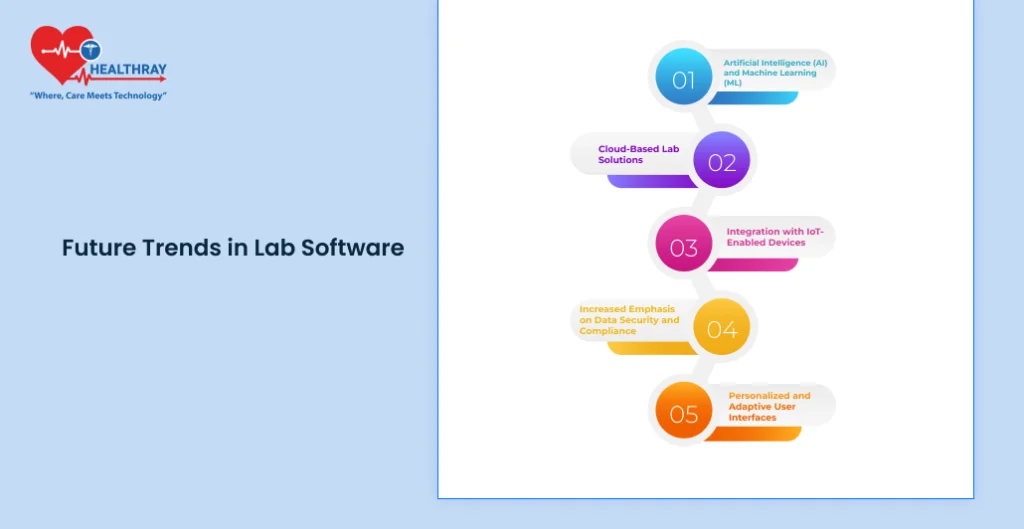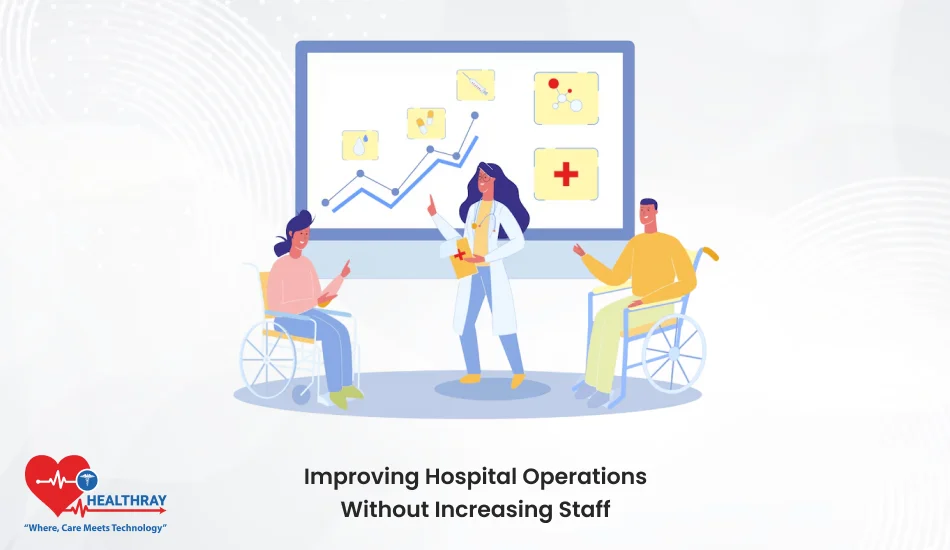Innovation in Modern Labs
Laboratories today need a lot of innovation. Lab managers, researchers, and decision-makers brainstorm ideas on how to increase productivity, ensure accuracy in data, and maintain industry standards day in and day out. Mechanized operations that once kept pace start lagging behind due to growing demands for efficiency, precision, and speed. Advanced lab solutions software and LIMS shine as a shining solution in that respect.
What does advanced lab solutions software bring to the table?
Advanced lab solutions software, integrated with Laboratory Information Management Systems, is changing the world of laboratory operations. It can simplify straightforward data entry procedures just as it does complex workflows so that laboratories can automate repetitive tasks, improve data accuracy, and build a cohesive platform for everything that happens in a laboratory. For researchers, it means more revolutionary research and less time spent wading through administrative tasks.
What to Expect in This Guide:
Below is the guide on understanding core features of lab solutions software and Laboratory Information Management Systems, how they benefit, and even examples of real life that impacts them. You will come to understand how this whole integration process is expensive and how to move on with these technologies in your lab. Let’s get there and see exactly how advanced software can unlock innovation for you in your lab.
Understanding Advanced Lab Solutions Software
Defining Advanced Lab Solutions Software:
Advanced lab solutions software combines some of the most modern tools to meet the requirements of a modern laboratory. LIMS, ELN, and analytics across platforms, put together, help laboratories improve how they use their information systems in order to better manage their work. These go beyond the mere recording method to instead provide a structured digital approach towards sample handling, workflow monitoring, and data integrity.
Key Features to Look For:
A good lab solutions software would encompass the following functionalities
Data Management: Data management Central data storage with secure access; the data is always current and secured
- Workflow automation: Automation of most general processes, from tracking samples and inventory management up to reporting and making researchers available for more demanding tasks.
- Compliance and Audit Support: The system could hold compliance features that can be used to serve the regulatory requirement besides providing audit trails that would generate full traceability of all the actions undergone within the system.
- Collaboration Tools: Data is shared in real time across team members, even departments. Collaboration is smooth.
- Real-Time Analytics and Reporting: View performance data and progress reports. It helps to make data-driven decisions.
With these tools available for utilization, lab decision-makers can break through to operational efficiency and improve the quality of data by proper management before focusing on what really matters: innovation driving and conquering research targets.
Benefits of Applying Advanced Lab Software

Improved Data Management with Integrity
Advanced software can organize and ensure data security as part of its core benefits. Tons of data are handled by the lab every day. It ranges from sample results to compliance documentation. Advanced software solutions usually centralize this data, holding on to the ease of access with security and compliance. Minimising errors and losing less data will enable labs to provide quality data integrity, acting like a backbone for sound research results.
Automation of routine tasks and workflows
Repetitive tasks are costly in terms of valuable time and resources, particularly in labs with high sample volumes or where the deadline is pressing. Most lab software solutions are designed to automate many of these repetitive tasks. For instance, automated sample tracking will automatically minimize the time spent in manual data entry, and inventory alerts will ensure that all critical supplies are replenished without interruption. Workflow automation frees up researchers to do more complex tasks, so labs can operate more efficiently.
Improved Compliance to Industry Standards
Sophisticated laboratory solutions software would often include such higher compliance features as audit trails, user access controls, secure data storage, and mechanisms all to help further with regulation compliance, especially of the more highly regulated labs as in healthcare and environmental testing laboratories and pharmaceutical laboratories. This naturally avoids the expected fines or the audits to be made to the lab, while also giving weight to the veracity of the processes involved.
Coordination across teams
The modern lab is usually a cross collaboration of teams from different departments or even locations. The lab software allows easy and seamless sharing of data, reports, and updates in progress among researchers, which leaves the chances of in silos information at bay. Now that a number of its other, most important features include shared dashboards and real-time updates, work can actually flow effectively between team members if located at the same lab or halfway across the globe.
Real-Time Insights and Decision Support
Advanced lab solutions are not just data collection but allow the understanding of data collected within context. It is now possible for the head of the laboratory or researcher to see in real-time how he or she has been performing, note where there are bottlenecks, and correct these instantaneously. Prompt access to the performance metrics plus trends to such decision-makers culminates into making prompter decisions that impact productivity and resultant.
Advanced lab software adoption brings many practical advantages to labs as they work better, maintain high standards, and create collaborative and innovative environments-positioning them well to achieve better results and staying competitive.
Case Studies: Successful Implementations

Example 1: Enhancing Productivity in a Pharmaceutical Lab
A mid-sized pharmaceutical lab recently undertook a Laboratory Information Management System to manage its growing sample load. Before the software came into the lab, the technicians there had to manually track samples and even transcribe test results. This was causing minor errors and time delay and compliance issues for many times in the lab. After implementing LIMS in the lab, it has received a significant amount of efficiency. Automated sample tracking cut down the errors and time also. But more importantly, every step is traceable. Built-in compliance features also facilitated the passing through of audits easily for the laboratory while keeping all regulations in check. Better data and workflow automation increased the lab’s yield by 30% after a year.
Example 2: Smoothing Out Data for Environmental Testing
An environmental testing laboratory thought that there was a need to handle complex datasets in a much better way. This sort of testing over distributed locations needed the facility to compare samples, analyze trends, and report on findings accurately. Once it agreed to accept data analytics software integrated with its ELN, the way of working in the laboratory changed.
The lab technicians can upload data for analysis and real-time visualization. It becomes easier to spot anomalies and ensure accuracy. It standardized the report and further perfected the teamwork characteristic by reporting findings. Thus, it reduced lab data processing by 40%. Reports to the clients took a lesser time to be produced, but were highly efficient.
Example 3: Enhancing interdepartmental teamwork in research through an academic university
Scientists and students from different departments participate in interdisciplinary projects whereby there is a collaboration in terms of research amongst the departments across a research laboratory of an academic university.
The ELN system helped the laboratory to overcome several of the communications and data sharing problems. Data from experiments could now be captured, stored and shared with data security. Thus, in an ELN, access controls made it possible that the researcher or the lab member could review the work done by other lab members and thus make a feedback about it.
It does not mean that the methods were exhaustive, but this system streamlined the way collaborations are done, eliminating the duplication of effort, and most importantly leaves the research data well-organized and easily accessible even if students leave the organization or staff changes.
These case studies illustrate how a different lab can take advantage of the sophisticated lab solutions in order to face the challenges that come their way. By automating, and giving better data handling, these tools empower labs to run smoother, comply more easily, and thus focus on advancing their research and business goals.
Cost-Benefit Analysis

Understanding Initial Investment vs. Long-Term Gains
Cost is a very huge consideration when one is considering moving to advanced laboratory software. Although investment may be in the way of software licenses, hardware upgrades, and training, long-term savings and benefits outweigh these initial investments. Advanced lab software reduces tasks, minimizes errors, and improves data management, all of which contribute to efficiency and save operational costs over time.
ROI Evaluation
Some good return on investment can come through the workflow and waste streamlining of advanced lab software. But ensuring integrity of data comes through integrity-based labs that automate repetitive tasks or simplify processes with the help of software. Those that cut the time spent in data entry and manual reporting typically experience productivity gains, freeing up an equivalent amount of time to put into more essential research efforts-by 40%.
Training and Support
Proper Training
Advanced lab solutions software is rather easily associated with success within it. Even the most technologically advanced software cannot work to its fullest benefit unless the users have been properly educated. Effective training on a system allows laboratory workers to take advantage of the feature set, minor problems, and exploitation of functionality within a tool that leads to more routine activities and ensures faster returns on investment.
Types of Training Programs Available
- Onboarding Sessions: Most software companies give you first onboarding sessions to introduce you to the core functionality so that the labs can get up and running smoothly.
- Hands-on workshops: The hands-on workshops allow staff members to experience the software in real-life conditions. They will be confident as they enter their data, track samples, and submit reports in the system.
- Online Training Resources: Each provider has a library of resources which includes video tutorials, manual guides, and FAQs that one can refer back to at one’s own pace and return to areas one wants to refresh their knowledge.
Continuous Improvement at Ongoing Support
Advanced laboratory software does not install once and forget. As laboratories grow or change direction, the needs of their software may change with it. Ongoing access to support means that laboratories stay abreast of the latest features; troubleshoot problems as they arise; and grow practices with the best LIMS software. Providers usually offer various levels of support from basic technical help to premium packages that include dedicated support teams.
Advantages of Software Updates
- Maximum Security: The laboratory data is always updated so that vulnerabilities are covered with patches, and the system is secure.
- New Tools and Functions: For every update, laboratories are provided with new tools or improved functions that can even make work easier for laboratories.
- Performance Enhancement: Updates normally enhance the performance of software so that it runs very smoothly and does not stop abruptly.
There is an investment in training and continuous support, and it ensures labs to be successful in the long run. This gives room to a team to exploit the software to its fullest as the lab change needs with time.
Future Trends in Lab Software

Artificial Intelligence (AI) and Machine Learning (ML)
In other words, predictive analytics is what drives lab operations through AI and ML in a bid to make labs predict trends and issues that may come. For instance, with algorithms propelled by AI, labs can facilitate data anomaly detection, predict their inventory needs, and optimize the workflow. Through AI in lab software, analysis of data happens faster and becomes more accurate. This is what enables the labs to be more confident about making data-based decisions.
Cloud-Based Lab Solutions
Some of the cloud-based lab software advantages include the following: scale and remote accessibility. Data lives in the cloud, so storage can be easily scaled up or down based on demand without significant cost implications. Additionally, through cloud solutions, one can access data and reports from anywhere and hence encourage more remote collaboration as well as fast decision-making for multi-location labs.
Integration with IoT-Enabled Devices
IoT is penetrating the lab through which smart appliances are connected directly to the software of the lab. The connected instruments can write data automatically; thus with lesser user input, the likelihood of chances of errors would also be low. This will let labs function much more accurately while recording detailed real-time information through the ease of connectivity across different lab tools and software.
More focus on data security as well as compliances
With digital data, the lab is worried more about the security and compliances. In the future lab software will probably have more advanced secure encryption with multi-factor authentication combined with the strongest tracking abilities to comply.
The labs will be much more confident about the protection they are undertaking in respect to their research and sensitive information.
Personalized and adaptive user interfaces.
Because software evolves, usages of the software also change. Most of these solutions evolve gradually into adaptable interfaces tailored according to the unique role of the user. In other words, what a researcher sees is entirely different from what a lab manager sees, allowing each user to access the most appropriate tools and information in a simple way in order to facilitate an increase in productivity.
Preparation for the Future of Lab Innovation
By doing so, these trends would let the labs envision the future while choosing their products and, consequently, select and upgrade their software tools. Novel inventions in AI, cloud storage, IoT, and more significant security measures make the labs remain agile to new challenges that have the capacity to face the rising challenges aptly.
Conclusion
Advanced lab solutions software adoption will allow innovative labs to innovate, work efficiently, and obtain high data integrity. Complex workflows will reach the automated repetition of routine processes for compliance purposes as lab software becomes strategic assets in development and efficiency, rather than tools in themselves. Data will be shared by health care laboratories integrated into the Hospital Management System.
It would ensure that all the departments are uniform, which also ensures improvement in patient care as well as better operational efficiency. This guide has pointed out how these software solutions help labs save time, reduce costs, and improve collaboration across teams. Labs using such advanced software do more than just boost productivity; they get a very crucial edge in precision and speed that let researchers and decision-makers focus on pioneering work instead of routine administration.
Indeed, just like the developing future trends that have several factors, labs have to age in their understanding of becoming updated with AI, IoT, and other technologies from the clouds. With the right tools, proper training, and adoption of forward-looking technologies, labs definitely will position themselves very well towards innovation and will be able to reach new pinnacles towards achieving their goals of research and operation.





